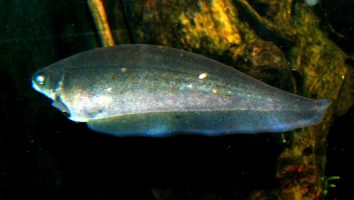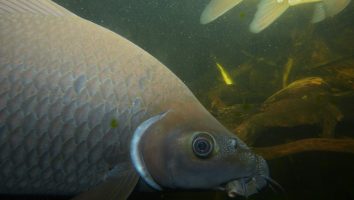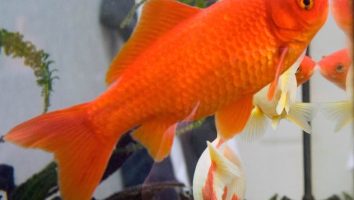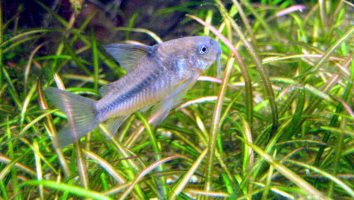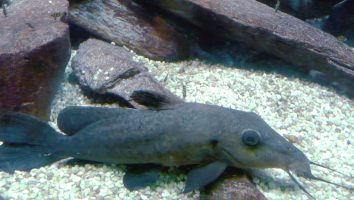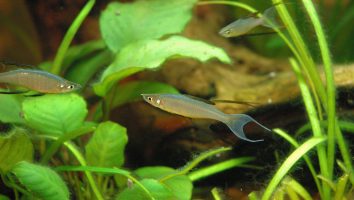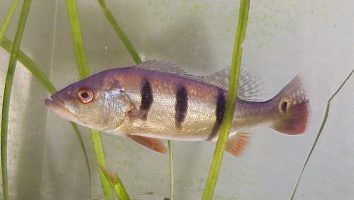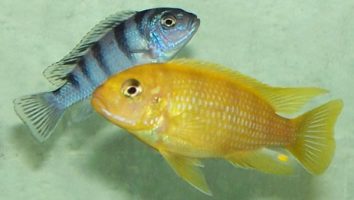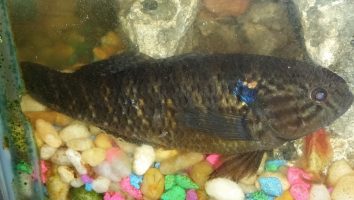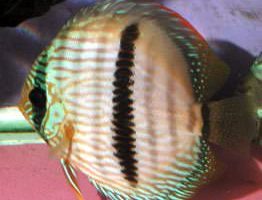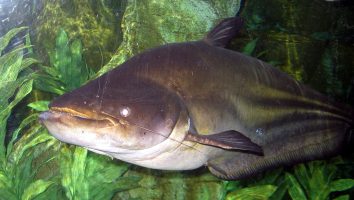The convict cichlid is a freshwater fish that is native to Central America. This fish is also known as the zebra cichlid, due to the black and white stripes that run down its body.
The convict cichlid is a popular choice for freshwater aquariums because it is relatively easy to care for and is a very hardy fish.
This guide will teach you everything you need to know about convict cichlid care, including diet, tank size, tank mates, and more!
Table of contents
Species overview
The convict cichlid (Amatitlania nigrofasciata) is a freshwater fish that’s native to Central America. It’s most heavily concentrated in rivers and streams in Costa Rica and Nicaragua, although it can also be found in Honduras and Panama.
This fish gets its name from the black stripes that run down its body. These stripes are quite pronounced and really make this fish stand out.
In the wild, convict cichlids are known to be fairly aggressive. They are known to attack other fish, as well as smaller animals and invertebrates. This aggression is something that you need to be aware of if you’re thinking about keeping them in your aquarium.
Convict cichlids are a popular choice for many aquarium enthusiasts because they are relatively easy to care for and are very hardy. They are also relatively inexpensive, which makes them a great choice for those on a budget.
Appearance
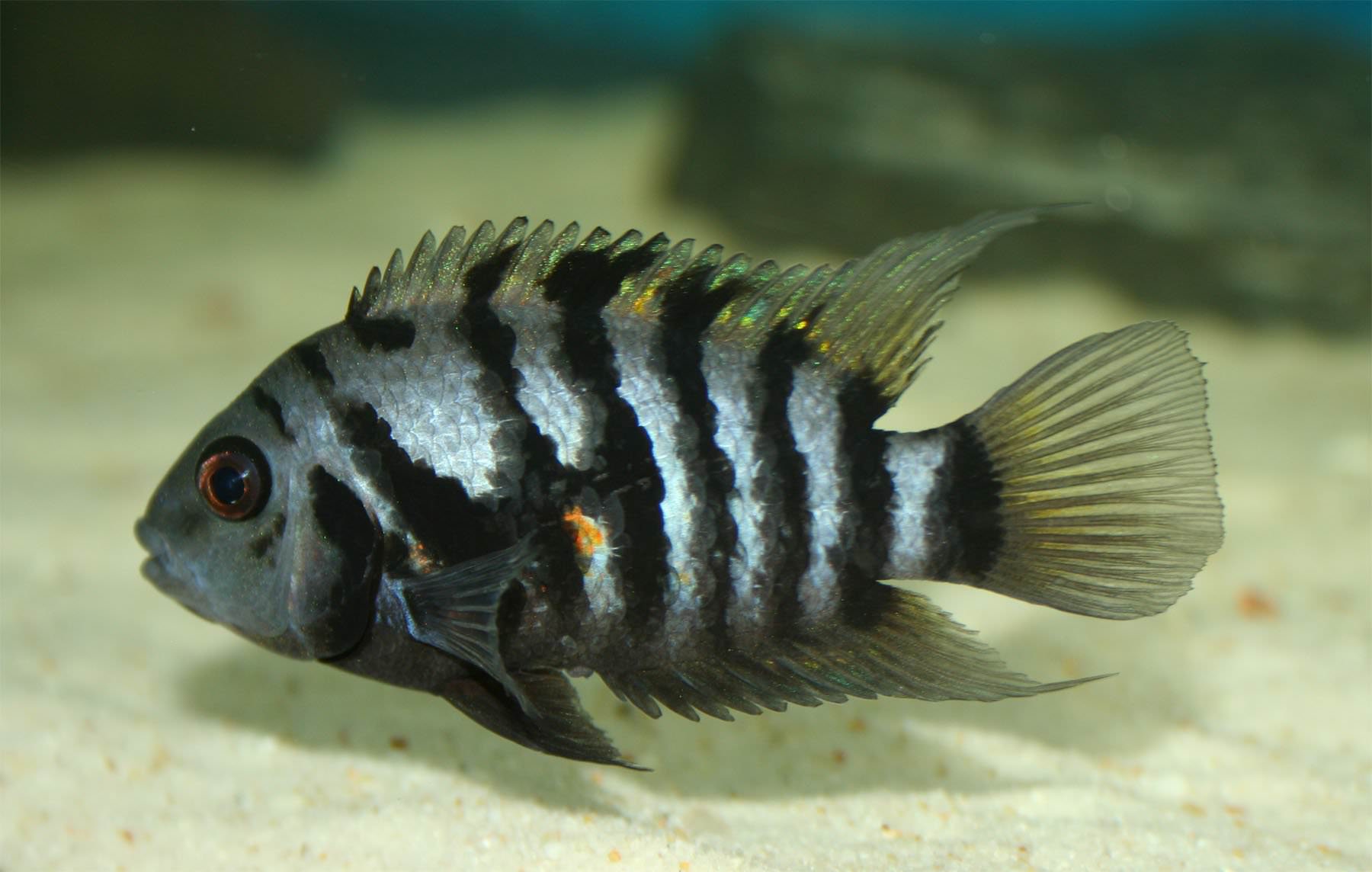
The most notable feature of Convict cichlids is their stripes. These fish have 2-3 vertical black stripes that run down their bodies. The pattern and number of stripes can differ from fish to fish however.
The base color of these fish is usually a light gray or silver. The tips of their fins and their tails are usually a darker gray or black.
Males tend to be a bit more colorful than females. They can have a slight pink or orange hue to them, whereas females are usually more of a drab gray.
Convict cichlids have a torpedo-shaped body that’s quite elongated. Their dorsal and anal fins are both rather large and start about two-thirds of the way back on their bodies.
The caudal fin is forked and extends back almost to the base of their tail. They have a small but noticeable adipose fin right before their caudal fin.
Lifespan
In captivity, convict cichlids usually live between 5 and 10 years. That’s a pretty wide range, but there are a number of factors that can impact their lifespan.
For example, if they’re kept in a small tank they’re going to have a shorter lifespan than fish in a larger tank. That’s because they’ll be more stressed and more susceptible to disease.
The quality of the water also matters. If the water is too warm or too cold, the fish will be stressed and won’t live as long.
Generally speaking, though, these are pretty hearty fish and as long as you take good care of them they should be around for quite a while.
Size
The average Convict cichlid size is around 6 inches, with some specimens reaching 8 inches. Females are typically smaller than males, but both sexes can reach the same max size.
Tank
Tank Size
The recommended minimum tank size for a convict cichlid is 20 gallons. This is assuming you’re only keeping one fish. If you want to keep more than one, you’ll need to add at least 10 gallons for each additional fish.
Convicts are relatively peaceful cichlids but they are known to be aggressive to their own species. So, if you’re planning on keeping more than one, we recommend you get a larger tank so they each have their own space.
Water Parameters
As with all cichlids, the convict cichlid is a tropical fish that requires warm water to thrive. They’re also quite sensitive to changes in water parameters.
For that reason, it’s important to maintain consistent water conditions. That means regular water changes, testing, and close attention to any changes in the tank.
The following water parameters are ideal for keeping convict cichlids happy and healthy.
- Water temperature: 74 to 82 degrees Fahrenheit
- pH levels: 7.0 to 8.5
- Water hardness: 10 to 20 dGH
- Alkalinity Levels: 5-20 dKH
What To Put In Their Tank
If you’re looking to set up a tank for a Convict cichlid, there are a few key things you need to know.
First and foremost, these fish are diggers. They’ll spend a lot of their time rooting around in the substrate looking for food. This means you need to be careful about what kind of substrate you use.
A soft substrate is going to be your best bet. Something like sand or small gravel will work well. Just avoid anything that’s too large or sharp.
These fish also like to have some places to hide. This can be in the form of plants, caves, or even just some driftwood. Convict cichlids are known to be pretty peaceful, but they can still get spooked sometimes.
When it comes to plants, you have a few options. Something like Java moss can work well since it’s not going to be uprooted by these fish.
As for decorations, just use your best judgement. Avoid anything that’s too small since these fish might try to eat it. Other than that, have fun with it!
Common Diseases
Convict cichlids are actually quite hardy fish. They’re not immune to disease, but they’re definitely more resilient than most other freshwater species.
The most common disease that these fish experience is ich. This is a parasite that can affect any fish, but it seems to target convicts more often than not.
The telltale sign of ich is the presence of white spots on the body, fins, and gills of your fish. If you notice this, it’s important to act fast.
The good news is that ich is relatively easy to treat. There are a number of different methods you can use, but the most common is to raise the temperature of the water. This will speed up the life cycle of the parasite and ultimately kill it off.
Of course, the best way to prevent your convicts from getting sick in the first place is to maintain a clean and stable tank. These fish are relatively hardy, but they’re not immune to disease.
By keeping the water quality high and providing the proper environment, you can significantly reduce the chance of your fish getting sick.
Behavior & Temperament
The convict cichlid is one of the most aggressive freshwater fish in the world. They’re not afraid to fight and will often attempt to kill anything that they consider to be a threat.
This is especially true when it comes to other convict cichlids. If you’re planning on keeping more than one in a tank, you need to make sure that there’s enough space for them to establish their own territory. Otherwise, they’ll fight until one of them is dead.
These fish are also known to be fin nippers. So, if you’re keeping them with other fish that have long fins, you can expect those fins to be bitten.
Convicts are also known to be escape artists. They’re good at finding ways out of tanks and aquariums. So, if you’re keeping them in a tank, you need to make sure that it’s secure.
All that being said, convict cichlids can make great pets. They’re very active and entertaining to watch. They’re also very hardy, so they’re a good choice for beginner aquarists. Just be aware of their aggressive tendencies and take steps to minimize the risk of problems.
Tank Mates
The convict cichlid is a popular choice for many freshwater aquariums. They’re relatively easy to care for and have a beautiful color pattern.
While they can be kept alone, most people choose to add them to a community tank. After all, they are social creatures that do best in groups.
The good news is that there are plenty of convict cichlid tank mates to choose from. The bad news is that not all of them are a good idea.
The biggest thing to watch out for is aggression. Convict cichlids are known for being territorial and can be quite nippy. They’re also known to harass other fish until they die of exhaustion.
For these reasons, it’s best to avoid tank mates that are small, slow, or timid. You also want to avoid fish that look similar to convicts. They’re more likely to become targets of aggression.
With all that in mind, here are some good convict cichlid tank mates:
- Firemouth Cichlid
- Jack Dempsey Cichlid
- Oscar Cichlid
- Green Terror Cichlid
- Blood Parrot Cichlid
- Texas Cichlid
- Plecostomus
Breeding
Convict cichlids are one of the easiest fish to breed in captivity. In fact, they will often breed without any intervention from the owner.
If you do want to breed these fish, the best way to go about it is to set up a separate breeding tank. The tank should be at least 30 gallons and contain plenty of hiding places.
Convicts are mouthbrooders, which means that the female will carry the eggs in her mouth until they hatch. For this reason, it’s best to remove the male after spawning.
The female will lay around 200 eggs, which will hatch in about two weeks. Once the fry are free-swimming, you can start feeding them baby brine shrimp and other small foods.
Conclusion
The Convict Cichlid is a great fish for beginner aquarists. They’re easy to care for and don’t require a lot of attention.
They’re also a good choice for people who want to keep a cichlid but don’t want to deal with the aggression that some species are known for.
If you’re looking for a low-maintenance fish that will add some color to your tank, the Convict Cichlid is a great choice!

